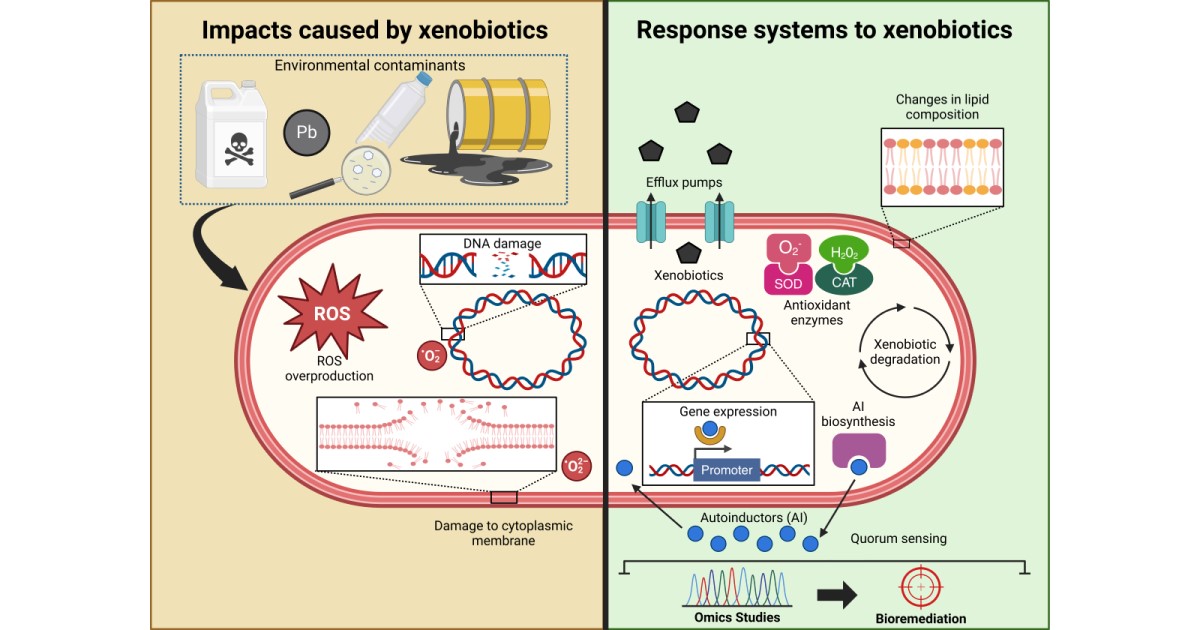Soil and Water Microbiomes: Advances and Present Challenges in Soil Bioremediation
A special issue of Agronomy (ISSN 2073-4395). This special issue belongs to the section "Farming Sustainability".
Deadline for manuscript submissions: 15 July 2024 | Viewed by 210
Special Issue Editors
Interests: bacterial response mechanisms to environmental stress
Special Issue Information
Dear Colleagues,
Agronomy aims to increase productivity by using pesticides, but this leads to the pollution of agricultural soils, river systems, and groundwater. This pollution disrupts the structure and function of microorganisms. Pesticides can impact soil and water microbiomes, potentially causing changes in microbial processes associated with pesticide tolerance and degradation. These characteristics can be utilized in bioremediation by individual strains or consortia of microorganisms. This Special Issue aims to explore innovative approaches to improving the safety and efficiency of bioremediation processes for pesticides in agricultural soils. We are interested in articles examining the response of microorganisms to pesticides and their potential application in bioremediation processes. This includes papers studying bacterial consortia, selected strains, and genetically modified strains. We will give priority to articles that investigate genetic and metabolic mechanisms, especially those utilizing omics approaches to do so.
Prof. Dr. Marcos Pileggi
Dr. Luiz Ricardo Olchanheski
Guest Editors
Manuscript Submission Information
Manuscripts should be submitted online at www.mdpi.com by registering and logging in to this website. Once you are registered, click here to go to the submission form. Manuscripts can be submitted until the deadline. All submissions that pass pre-check are peer-reviewed. Accepted papers will be published continuously in the journal (as soon as accepted) and will be listed together on the special issue website. Research articles, review articles as well as short communications are invited. For planned papers, a title and short abstract (about 100 words) can be sent to the Editorial Office for announcement on this website.
Submitted manuscripts should not have been published previously, nor be under consideration for publication elsewhere (except conference proceedings papers). All manuscripts are thoroughly refereed through a single-blind peer-review process. A guide for authors and other relevant information for submission of manuscripts is available on the Instructions for Authors page. Agronomy is an international peer-reviewed open access monthly journal published by MDPI.
Please visit the Instructions for Authors page before submitting a manuscript. The Article Processing Charge (APC) for publication in this open access journal is 2600 CHF (Swiss Francs). Submitted papers should be well formatted and use good English. Authors may use MDPI's English editing service prior to publication or during author revisions.
Keywords
- environmental microbiology
- analytical chemistry
- DNA analyses
- metabolic pathways
- cell communication
- xenobiotics biodegradation
- microorganism genomes
- quorum sensing
- quorum quenching
- metabolomics
Planned Papers
The below list represents only planned manuscripts. Some of these manuscripts have not been received by the Editorial Office yet. Papers submitted to MDPI journals are subject to peer-review.
Type of manuscript: Article
Title: Microbial diversity and community structure characteristics of coconut rhizosphere soil under different fertilization treatments
Authors: Lilan Lu and Yingying Liu
Affiliations: Coconut Research Institute of Chinese Academy of Tropical Agricultural Sciences/Key Laboratory of Tropical Oil Crop Biology in Hainan Province
Abstract: Using Illumina high-throughput sequencing technology to detect soil microbial composition and diversity, and conducting correlation analysis between soil physicochemical properties and rhizosphere soil microbial community characteristics. Fertilization treatment significantly increased the soil moisture content, EC, nitrogen, phosphorus, potassium, available calcium, and available magnesium content in the coconut rhizosphere. Fertilization treatment cannot completely increase the abundance and diversity of rhizosphere microorganisms in coconut soil. But soil physical and chemical indicators can affect the richness, uniformity, and distribution of microorganisms in the soil.
Type of manuscript: Article
Title: Effect of Neem Oil-based Nano-emulsion application on Nematodes Infestation and Soil microbial Activity
Abstract: Various synthetic nematicides are currently used effectively in the control of plant parasitic nematodes such as root-knot nematodes which considered the one of destructive pests around the world. However, unfortunately the synthetic nematicides have adverse effects on humans (carcinogenic) and the environment. Neem oil is one of the safe and effective alternatives to synthetic nematicides to control the root-knot nematodes. The effectiveness of repeated neem oil application in suppressing the root-knot nematodes infestation in figs seedlings was therefore examined in this study, both in its natural form (10 ml/L) and in its nano-emulsion form (5 and 7 ml/L). The recorded reduction parameters of M. incognita were J2/250g soil, galls and egg masses / 5g roots of infected fig seedlings were measured at that time, and the effects of these natural additives were compared with the Fosthiazate (Krenkel 75%EC). The impact of such soil amendments on some typical plant parameters, the total microbial count (CFU) of soil, and the overall enzymatic activity of the fig rhizosphere were also included. Obtained results revealed that the soil population density of root knot nematode suppressed by 80.3% due to the application of nano-emulsion of neem oil (at 7ml/L) Also, nano-emulsion of neem oil resulted in the higher reduction of nematode egg masses (60.4%) after three applications. Regarding galls, the findings were closed from 66% to 64.6, 64.3, and 64.2%, respectively when compared with Fosthiazat, neem oils and nano-emulsion form. From the above, the results of the present work recommend the use of nano-emulsion of neem oil as one of the effective and eco-friendly means to reduce the root- knot nematode on fig (and many other pathogens) as a promising approach towards safe organic farming.







